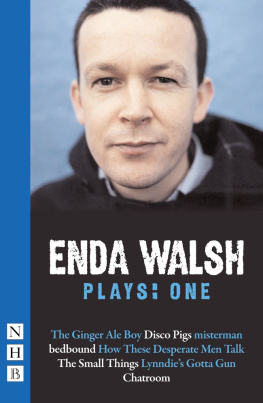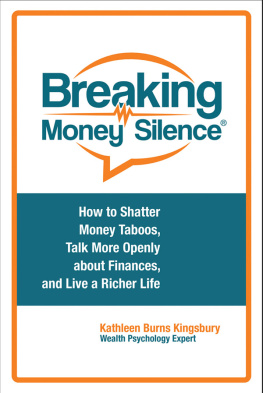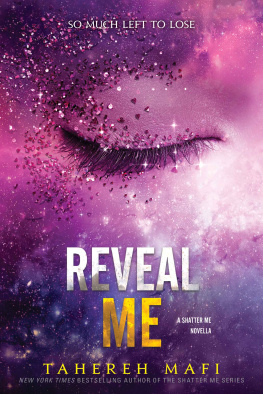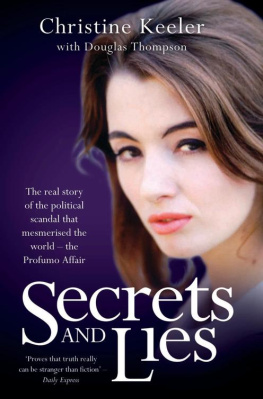First published in 2019 by
Merrion Press
An imprint of Irish Academic Press
10 Georges Street
Newbridge
Co. Kildare
Ireland
www.merrionpress.ie
Alan Shatter, 2019
9781785372377 (Paper)
9781785372384 (Kindle)
9781785372391 (Epub)
9781785372407 (PDF)
British Library Cataloguing in Publication Data
An entry can be found on request
Library of Congress Cataloging in Publication Data
An entry can be found on request
All rights reserved. Without limiting the rights under copyright reserved alone, no part of this publication may be reproduced, stored in or introduced into a retrieval system, or transmitted, in any form or by any means (electronic, mechanical, photocopying, recording or otherwise) without the prior written permission of both the copyright owner and the above publisher of this book.
Typeset in Minion Pro 11.5/15 pt
Cover front: Minister for Justice Alan Shatter TD, 2011.
Photograph: Bryan OBrien/ The Irish Times .
Cover back: Minister for Justice Alan Shatter TD at a press conference on the subject of allegations of improper cancellation of Fixed Charge Notices by members of an Garda Sochna, 2013.
Photograph: Bryan OBrien/ The Irish Times .
Introduction
The arc of the moral universe is long but it bends towards justice From a sermon delivered by Martin Luther King Jr, in Wesleyan University, Middleton, Connecticut, USA, in 1964.
T his famous, much-quoted optimistic insight of Martin Luther King Jr is inscribed on the King Memorial in Washington DC. While I am an admirer of Kings courageous legacy, I am not a great believer in divine providence, the force of a universal morality, or in historical inevitability ultimately ensuring that justice is achieved and that truth prevails. I believe, in todays complex multimedia age, that truth is a daily casualty, a pliable commodity readily rejected or distorted by those who, for a variety of reasons, favour or have a vested interest in promoting alternative realities. This is not an entirely new phenomenon. It did not first emerge, as some would have us believe, with Donald Trumps presidency of the United States of America. It is a feature of human discourse since time immemorial. It has merely achieved greater public prominence since Trumps inauguration and as a result of contemporary intellectual and political battles over fake news. I use the phrase fake news with some reluctance as it has evolved into a Trumpian catchphrase all too regularly deployed by one of the worlds greatest exponents of falsity to denigrate truth. It is the importance of truth that is central to my story.
Truth and justice matter but they do not inevitably win out. Facts can too easily be manipulated and distorted. Lies can too readily be skilfully camouflaged, disseminated and within moments travel around the world to be accessed by many millions of people. There have always been those who use deceit to gain personal benefit or advantage. The difference in todays world is the way in which global communications and the internet enable lives and reputations to be destroyed in an instant by lies and falsehoods.
The perceptions of good people are formed by the truths or lies they read in newspapers, glean from television and radio broadcasts or access online. As Peter Charleton SC, now a Supreme Court judge, observed in 2006 in his scholarly book Lies in a Mirror , lies or false news whip up emotions, generate hatred and infect cognitive capacity. He correctly asserted deceit causes injustices, big and small, to those with whom we interact. However, lies that do so are not confined to deceit. False allegations for which there is no evidence made by individuals who are delusional, mistaken, or misled by others also cause injustice. Opinions expressed by journalists, commentators and experts all add to the mix and their opinions substantially derive from the truths, half-truths or lies available to them and their capacity to digest and assess what they believe they know. Unfortunately, too often, controversial opinion is valued more than the tedium of careful analysis and fact checking. Constant, online competition between journalists, broadcasters and social media narratives complicate matters in a 24/7 news media cycle. Greater importance is too frequently attached to breaking news, speed of publication and sensationalising, rather than accuracy and research.
In the world of Irish politics that I inhabited as Irelands Minister for Justice, Equality and Defence, during the period February to May 2014, fake news was in the ascendancy. Truth, if inconvenient, was sidelined and denigrated. This was not a sudden development. Some time had elapsed before we arrived at that point and both politicians on the Opposition benches in Leinster House and a select group of journalists, broadcasters and commentators played a central role. Attention-seeking politicians in search of public praise became addicted to desired, exaggerated and fictitious narratives and allegations they opportunistically contrived or promoted. Too many journalists and broadcasters abandoned their rational and objective faculties to uncritically embrace the same narratives and allegations and radiate in their glow. Fiction replaced fact in an unprecedented political and media frenzy that dominated political discourse and viciously targeted and demonised those who would not opt into the prevailing popularised orthodoxy. Plaudits were readily available for those who opted into the approved mythology while nothing but opprobrium greeted those who resisted doing so. Eventually, the political and media onslaught together with the publics perspective, gleaned from opinion polls, contaminated and affected the judgement and actions of those I most admired and with whom I worked closest as a Cabinet minister in the Irish Government the Taoiseach, Enda Kenny, and the Attorney General, Mire Whelan. It also negatively influenced the insights and conduct of some of my other cabinet colleagues.
February 2014 brought together a perfect storm of issues focusing on my ministerial competence and conduct and that of An Garda Sochna, the Irish police force. After a brief lull, the storm regained its momentum in mid-March of that year and then evolved in the first week in May 2014 into a category five hurricane which destroyed my reputation and laid the foundations for ending my over thirty years of active involvement in Irish politics.
An outsider who knows nothing of the events that occurred would suspect that I was guilty of serious criminal misconduct or that I was responsible for major political wrongdoing or dishonesty or gross incompetence or had engaged in some terrible political row with the Taoiseach or my Fine Gael colleagues. The outsider would also expect that by now I would be serving time in prison for my wrongdoing or that any uncertainty about my guilt or failures would have long ago been dispelled. Of course, he or she would be mistaken. What the outsider would not expect is that in the aftermath of my resignation from government all of the allegations that led to my political downfall would be discredited and established to be entirely untrue by two different independent statutory Judicial Commissions of Investigation (see the OHiggins and Fennelly Reports ) and one independent non-statutory judicial inquiry (see the Cooke Report ). None of their reports voiced a word of criticism of my ministerial behaviour and the expertise I applied to my ministerial duties, although to this day there remain some still wedded to and heavily invested in a critical false narrative. Ironically, as a result of the inquiry and investigations conducted, I believe that when it comes to allegations of bad conduct, I am the most exonerated and vindicated politician in the Irish States history, an accolade in which I take no pleasure.









